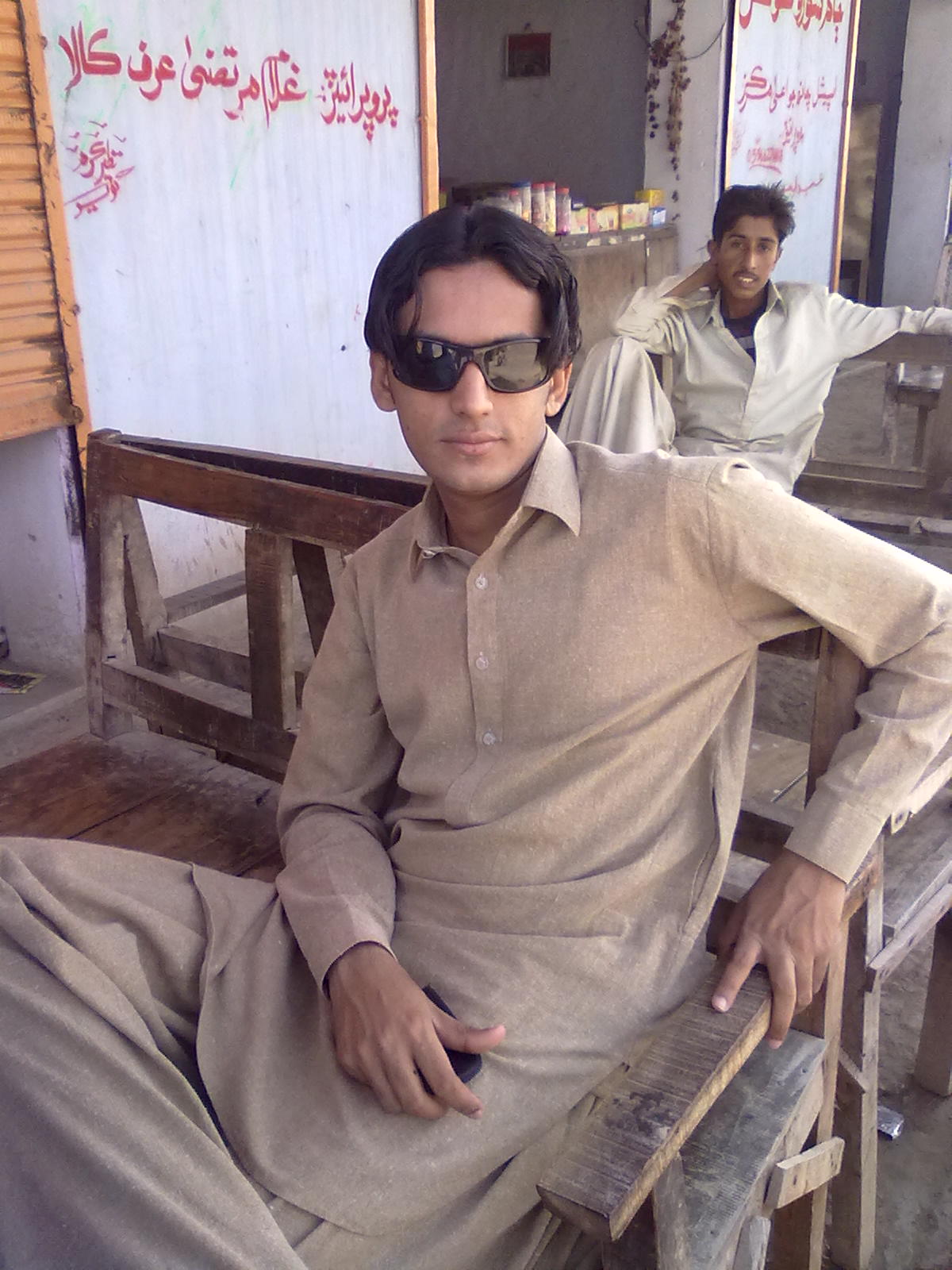Pakistansindhicouncil gets the job done!
About UsThe essential condition to call someone Sindhi is not to be born in Sindh or know the Sindhi language, but to feel oneself Sindhi, recognized by other as a Sindhi. Other people will call us Sindhi's when they find the difference in our living pattern, in our customs and traditions, in our thought and action, which are quite distinct from their way of living. Thus we may conclude that “SINDHYAT” is the emotion which makes a person feel that he is Sindhi and also enables others to recognize him as Sindhi.. Address: Cell: 03342065250, 03123306975 |
History Of Sindh
Sindh is a repository of varied cultural values and has remained the seat of civilization and meeting point of diverse cultures from times immemorial. After Independence on August 14, 1947 with the influx of Muslims from India, its culture has progressively assumed a new complexion. Sindh’s cultural life has been shaped, to a large extent, by its comparative isolation in the past from the rest of the subcontinent. A long stretch of desert to its east and a mountainous terrain to the west served as barriers, while the Arabian Sea in the south and the Indus in the north prevented easy access. As a result, the people of Sindh developed their own exclusive artistic tradition. Their arts and craft, music and literature, games and sports have retained their original flavor. Sindh is rich in exquisite pottery, variegated glazed tiles, lacquer-work, leather and straw products, needlework, quilts, embroidery, hand print making and textile design. According to renowned European historian H.T. Sorelay, Sindhis had not only contributed to literature but also to astronomy, medicine, philosophy, dialectics and similar subjects.
Melas (fairs) and malakharas (wrestling festivals) are popular. Falconry, horse and camel breeding and racing are characteristic pastimes. Sindhi fishermen float earthen pots to catch the palla fish in the Indus, bullock cart racing and cockfighting are also typical of the province.
Genuine love for fellow beings, large heartedness and hospitality constitute the very spirit of Sindhi culture and it is the association of the cultural elements that elevate it and keep aloft its banner among the contemporary cultures of South-Asia. Having lived for centuries under the changing sway of various dynasties i.e. the Arabs, Mughals, Arghuns, Turkhans and Soomras, Sammahs, Kalhoras and Talpurs, Sindhi culture is a fusion of multiple culture patterns. These splendor and enrichment are reflected in Sindhi art and architecture, habits and customs. The old tombs and buildings in Thatta, Sehwan, Hyderabad, Sukkur and the excavations at Bhambore, Brahmanabad and Debal bear ample evidence in support of the above statement. These places fostered in their environment, some of the best cultural values which were handed down to the inhabitants of the adjoining areas. Today, these values form the very foundation of Sindhi culture.
The Sindhi language has pure Sanskrit basis and is closely related to the ancient Prakrit. Its alphabet contains fifty-two letters. The Rev. Mr.G. Shirt of Hyderabad, one of the first Sindhi scholars, considered that the language is probably, so far as its grammatical construction is concerned, the purest daughter of Sanskrit. It has small sprinkling of Dravidian words, and has in later times received large accessions to its vocabulary from Arabic and Persian. After the advent of Islam, a number of Sindhi scholars not only wrote books in Arabic on various aspects of Islam, but also composed poetry of a high order in that language. During the rule of Soomras and Sammas, Sindhis produced excellent poetry, and amongst the earliest and best-known poets we find the name of Syed Ali and Qazi Qadan both of Thatta and their younger contemporary, Shah Abdul Karim of Bulrhi, the great-grandfather of Shah Abdul Latif Bhitai.
Qazi Qadan (870-985 A.H.) introduced Philosophy into Sindhi poetry. He has in his poetry laid great emphasis on purity of mind and the study of the self. In one of his verses he says, "Even if you master thoroughly the great Arabic works Qudoori and Kafia you will only be like an ant sitting within a well in a limited environment knowing nothing of the world outside".
Then comes Shah Abdul Karim of Bulrhi. In 98 couplets he has explained the intricacies of human philosophy. In one of his couplets, he says "The best way of Living in the world is to give your heart to the beloved and be bodily connected with fellow human beings".
Shah Latif and his contemporaries, Shah Inayat, Muhammad Moeen Thattvi lsso Mian and Misri Shah, were also pioneers in the field of the well-known Sindhi Kafi Lyric. Others who contributed to kafi were Qasim, Hyder Shah, Fazil Shah, Pir Mohammad Ashraf, Assooran and Qaleech Beg. Misri Shah is considered to be the undisputed monarch in the domain of Kafi. The term Kafi was originally taken from Shah Abdul Latif's waie, which correspond to Ghazal. Sachal Sarmast added glory to Kafi in his lyrics.
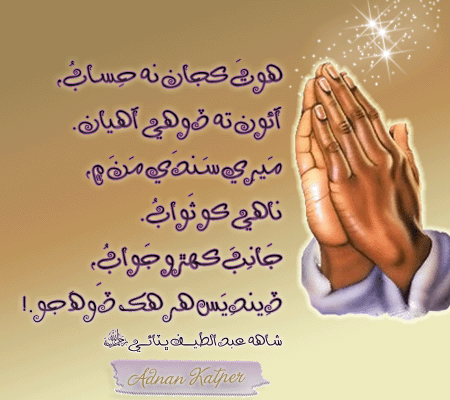
After the advent of Islam, a number of Sindhi scholars not only wrote books in Arabic on various aspects of Islam, but also composed poetry of high order in that languages. It is presumed that these scholars also wrote in their own language. During the rule of Sumras and Sammas, Sindhis produces excellent poetry, and amongst the earliest and best-known poets, we find the name of Syed Ali and Qazi Qadan both of Thatta and their younger contemporary, Shah Abdul Karim of Bulrhi, the great-grand father of Shah Abul Latif Bhitai.
Long before the British rule, under the influence of Persian poetry, the Sindhi poets borrowed many ideas from Persian poets. There were, however, some poets such as Mohammad Qasim, Murtaza Thattavi, Gul Mohammad Gul, Syed Gada, Hafiz Hamid, Mir Abdul Hussain Sangi, Zaman Shash and others who, in spite of having adopted Persian forms, derived their inspiration from the classical Sindhi poets. Theirs works have, therefore been popular among the masses, as well as people of more sophisticated tastes. Others, who continued to compose in indigenous styles, using the Sindhi language in its purest from, include Misree Shah, Mahdi Shah, and Hafiz Shah. Sahibdion Shah, Wali Mohammad Leghari and Hammal Faqir.
Qazi Qadan (870-985 A.H.) of Sehwan was the Sindhi poet who introduced philosophy and mysticism into Sindhi poetry. He has in his poetry laid prate emphasis on purity of mind and the study of self. In one of his verses he says: " Even if you master thoroughly the great Arabic works Qudoor and Qafa you will only be like an ant sitting within a well in a limited environment, knowing nothing of the world outside.
Kafi the Shah and his contemporaries, Shah Inayat, Muhammad Moeen Thattvi, Isso Mian and Misri Shah, were also pioneers in the field of the well-known Sindhi Kafi Lyric. Others who contribute to Kafi were Qasim, Hyder Shah, Fazil Shah, Pir Mohammad Ashraf, Assooram and Qaleech Beg. Misri Shah is considered to the undisputed monarch in the domain of Kafi. The term Kafi was originally taken from Shah Abdul Latif's waie, which corresponds to ghazal. Sachal added glory to kafi in his lyrics. After Khalifo Gul Mohammad a host Sindhi poets contributed to the development of the ghazal. The following poets deserve special mention: Qasim Shamsuddin Bulbul, Mir Abdul Hussain Saangi, Bewas Lekhraj Kishanchand Aziz, Zia Fani, Farid, Fakir Abdul Rahim of Groroh and Hafiz Mohammad Hayat.
Humour Shamsuddin Bulbul was the first poet to introduce humor in Sindhi poetry. He can very well be compared to Akbar Allahabadi.
In this field Mohammad Hashim Mukhlis and more particularly Mirza Qaleech Beg, the father of modern Sindhi poetry and prose have left an indelible mark. The latter’s humor is much more polished and constructive. " Saudai Khan" is a modest collection of his poetry dealing wit the experiences of life and the ravages of time. The book is in two volumes, and each column consists of homage paid to his ancestors and guide. He composed only 14 ghazals in Urdu.
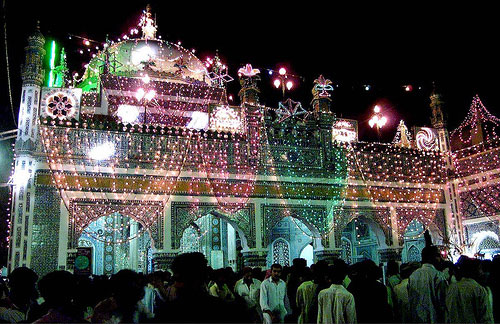
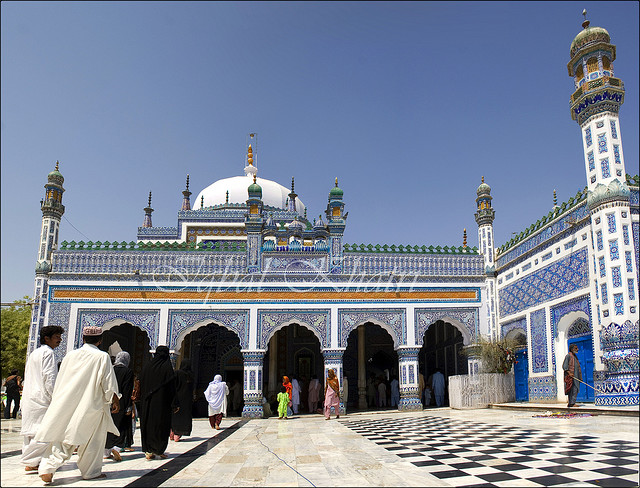
Shah Abdul Latif Bhitai (1689-1752) perfected Sindhi poetry both in from and in content and is reckoned as the peerless master of Sindhi verses. The most salient feature of his poetry is Sufism, which he had presented with dexterity in his famous work, Shah Jo Risalo. The main characteristics of Shah Leif's poetry is that it is a ‘remarkable record of God-intoxicated man’s longing to rise above his level of life in order to meet his Maker". He had a command to express and interpret the joys and sorrows, hopes and aspirations of the people of Sindh. Shah Latif's poetry depicts nature and its manifestations in a most vivid and vivacious manner. He had composed beautiful verses on the river Indus, the shining surface of lakes and the barren ranges of hills. He had also versified on the behavior of the sea and the boats and boatsmen living on the shore of the sea. He was the most prolific writer and poet of his age. His poetry is deeply rooted in the soil of Sindh, yet it has a universal appeal.
So great is the impact of his immortal work on Sindhi literature that one hears its distinct echo in all the poetry produced by later generations. From the time of shah Latif to the British conquest of Sindh, there were a large number of Sindhi poets, such as Mohammad Zaman of Luwar, Abdul Grohari, Sachal Sarmast, Bedil, Bekas, Sami, Pir Ali Gohar Asghar (Pir Pagaro), Roohal Faqir, Pir Asghar Ali, Pir Ghulam Shah Rashidi and Sabit Ali Shah Sabit, whose works a still to be found. During the days of the Sumras, the Sammas and later on during the Kalhora and the Talpur period, Sindh was the court languag.
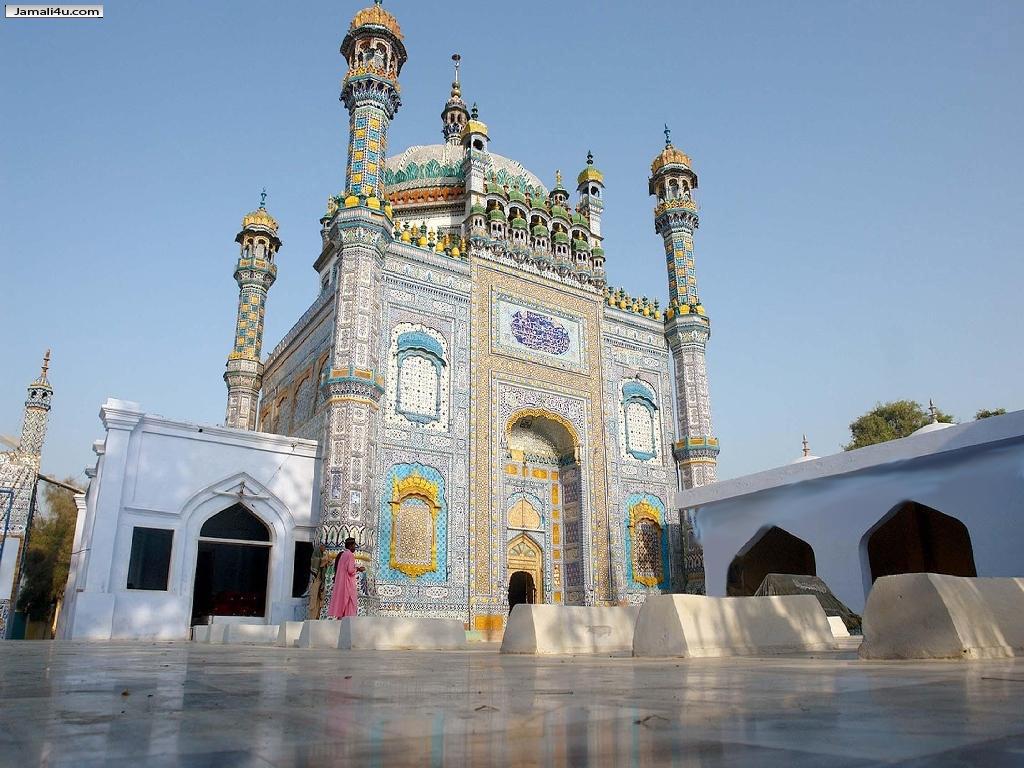
Sachal Sarmast (Abdul Wahab) is another Sufi poet of distinction who composed verses on philosophy and Sufism. He was at home in a number of languages and composed poetical pieces in Arabic, Sindhi, Saraiki or Multani, Hindi, Punjabi, Urdu and Persian. His poetry is replete with Divine Love. It is on Monotheism, the Glorious Quran and the Sunnah of the Prophet Mohammad (Peace Be Upon him). He also composed poems of high order in Urdu and Persian. The great Sufi poets-Attar, Jami and Roomi influenced him.
Hiis Sindhi poetry encompasses a wide range of subjects and possesses its own individuality. He perfected a great deal of old style i.e. Abyat and Dohas greatly in vogue before hi, While Shah Latif enhanced the standard of Sindhi to the highest level of excellence in style, diction and subject matter, Sachal Sarmast took the lead in raising the standard and level of kafi, ghazal and marsia in /Sindhi poetry. Unlike Shah Latif, whose compositions are woven around local and folk themes, Sachal has touched on all Great Sufi saints, fountains of knowledge and learning, besides the most popular folktales of the Indus valley. The images, similes, metaphors and allegories employed by Sachal give him a prominent place in Sindhi literature after Shah Latif.
It was in the British period that really good prose began to be produced. Syed Miran Mohammad Shah-I of Tikhar, Diwan Kewal Ram, Ghulam Hussain and Akhund Latifullah are among the early prose writers. But Shamsul Ulema Mirza Qaleech Beg can rightly be called the father of modern Sindhi prose. He is said to have written or translated from other languages about 400 books of poetry, novel short stories, essays etc.
"Diwan-e-Qaleech" is a collection in alphabetical order of his poetry in Sindhi. In contains about 433 verses. Another work of importance is his translation of Rubaiyat-e-Omar Khayyam in which he has followed the same meter as employed in the original Persian work. This translation has filled an important gap in Sindhi literature.
Music the patronage of music in Sindh started wit the advent of Muslims. In 72AD; when the famous Arab General Muhammad Bin Qasim was engaged in his conquest of Sindh, the Sammas of Central Sindh gave him a rousing reception. Headed by musicians, playing the Dhol-and-Shahnai, "Orchestra", and skilled dancers giving their performances, they came to greet Muhammad Bin Qasim, who echoed the whole show. The grandeur of the musical performance and the big crowd impressed a lieutenant of Muhammad to such an extent that he suggested to the General that their army should pray to God that such a powerful tribe had been subjugated so easily. Muhammad who had a good sense of humor". The Dhol-and-Shahnai performance whish has been the traditional " Orchestra" of Sindh, before and since 8th century AD. Is most popular throughout the province even today.
Interest in the classical ‘Hindustani’ as well as the indigenous music in Sindh reached its height in 16th century during the reign of the Turkhan rulers, Mirza Jani Beg and his son Mirza Ghazi Beg. Both the father and the son were great patrons of poets like the famous Talib Amuli and others, and of numerous musicians who invented new musical forms, naghams, and a variety of tunes. Both the rulers were accomplished musicians themselves. Their capital Thatta was the rendezvous.
